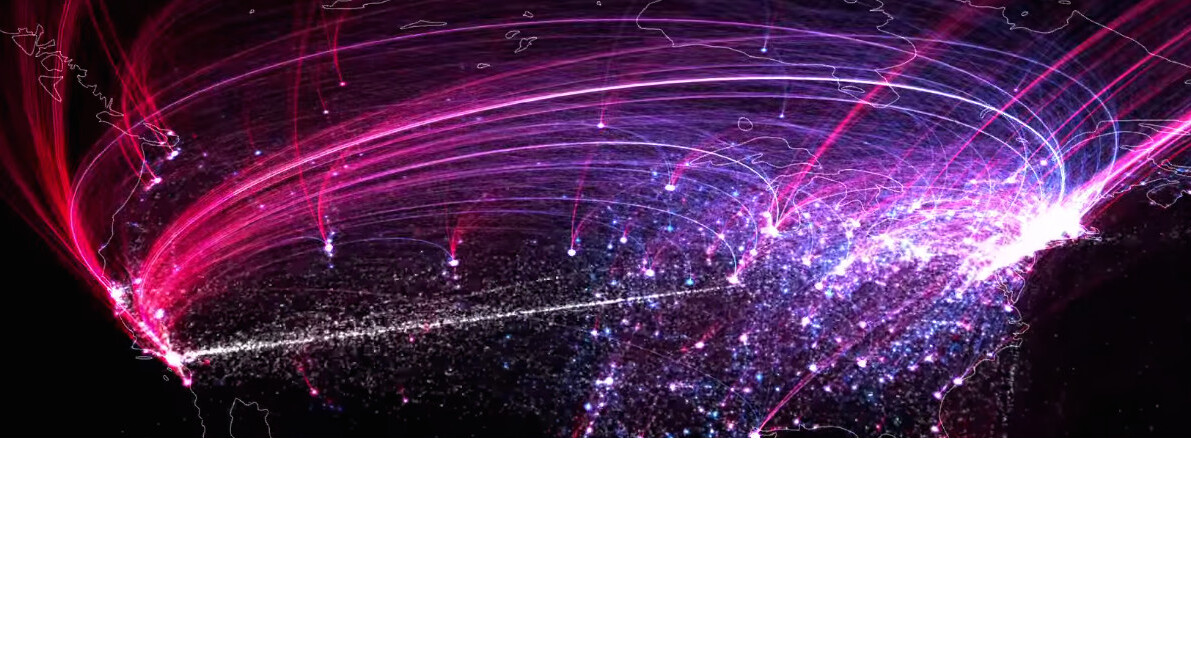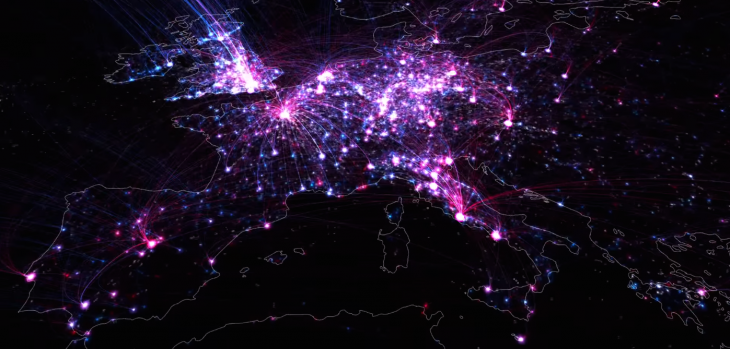
The theme of this year’s #TNWUSA conference is ‘Where Business and Cultures Collide.’ We’ll be focusing on international growth and regional technology trends, as well as best business practices and experiences when it comes to expanding abroad.
One of the most exciting things we’ve noticed about 2014 has been the number of tech companies testing the waters of unfamiliar markets. Regardless of our unparalleled access to information today (thanks to a little thing called ‘the internet’), cultural and regulatory differences around the world can trip up the most sturdy of expansion plans. #TNWUSA ‘14 aims to help you get to grips with these cultural contrasts and market differences, armed with a new range of tools and techniques.
So when we read a paper recently published in Science on the migration and history of culture across Europe and North America, we got a little bit excited.

The movement of culture over two millennia
As the above image demonstrates, “A Network Framework of Cultural History” by Maximilian Schich, Mauro Martino et al. is more than ‘just’ an academic paper – it’s a breathtaking visual history of the birthplaces, deathplaces, and therefore the migratory movement of more than 150,000 notable cultural thinkers across the last 2,000 years.
Schich, Martino, and the rest of the team procured their list of VIP (Very Intelligent People) from the last two millennia using available databases – including Freebase, the General Artist Lexicon, and the Getty Union List of Artist Names. They then set to work on establishing, visualising, and attempting to understand what the movement of culture looks like on a global scale.
The evolution of Europe
Here’s what a map of the movement of cultural thinkers across Europe looks like – including the rise and fall of Rome, the arrival of Paris on the cultural scene, and the influence of the British Empire (births are in blue; deaths are marked in red):
The mass-exodus stateside
And here’s what the rise (and rise) of the United States looks like. Notice the initial trickle originally hailing from Europe to the East Coast, and gradually making its way to the Wild Western Frontier (specifically San Francisco). This is followed by the eventual EXPLOSION of movement across the country, due to industries such as Hollywood and Silicon Valley – not to mention the arrival of affordable automobiles. Of course, New York is also there, shining brighter than almost everywhere else on the map:
One of my favourite things about the team’s plotting and scheming schematics is the visual evidence it produces for local instabilities in human mobility dynamics. For example: we see the intellectual monolith that was Rome and her empire, give way to other cultural hotspots such as Vienna, Berlin and Amsterdam (home to The Next Web). Perhaps unsurprisingly, Amsterdam had its highest global share of notable people during the 17th Century – the Dutch Golden Age. Think Rembrandt, Spinoza and Michiel de Ruyter.
After a significant drop-off, the Dutch Capital started to steadily reclaim ground with the intelligentsia by the 20th and 21st Century; today, Amsterdam is one of Europe’s most fertile hotbeds for artists, advertising agencies, and tech startups. In contrast, New York started to claim the lion’s share of notable people in the 20th and 21st century, far outreaching every other international hub except for London and Los Angeles. And when it comes to LA (or more specifically, Hollywood), we see roughly 10 times as many deaths as we do births. Make of that what you will!
#TNWUSA 2014
If this beautiful research is a history of the migration of culture, business and influence around the world, then #TNWUSA ‘14 will be a comprehensive opportunity to survey the contemporary landscape. However, there will be at least one significant difference: due to the datasets available to the team behind “A Network Framework of Cultural History,” there is a strong emphasis on the cultural influencers of Europe and the US. At #TNWUSA, we’re aiming to accommodate a slightly broader range of markets.
The conference on December 10 in New York will also see attendees, investors and influencers come together from a whole range of exciting up-and-coming regions, such as South-East Asia and South America.
When it comes to speakers, our lineup currently includes the likes of David Weinberger, one of the most influential American authors on technology, and Hilary Mason, a world-leading authority on data science.
David is best known for his work discussing the influence of technology on human communication, relationships and ideas, including the internationally acclaimed book The Cluetrain Manifesto. He is also a senior researcher at Harvard’s Berkman Center for Internet & Society, and Co-Director of the Harvard Library Innovation Lab. Hilary is currently Data Scientist in Residence at Accel – the leading venture and growth equity firm – as well as Scientist Emeritus at bitly, co-founder of HackNY, co-host of DataGotham, and a member of NYCResistor.
Both will also be joined by Nir Eyal, entrepreneur and author of Hooked: How to Build Habit-Forming Products. #TNWUSA2014 takes place on December 10 in New York City. Click here to purchase limited super earlybird tickets.
For a copy of the research paper ‘A Network Framework of Cultural History,’ please visit Science. A 5-minute version of the data visualisation – accompanied by a descriptive voiceover – can be found here.
☞ Follow us on twitter: @TNWConference
Like us on Facebook: facebook.com/TNWConference ☜
Get the TNW newsletter
Get the most important tech news in your inbox each week.





